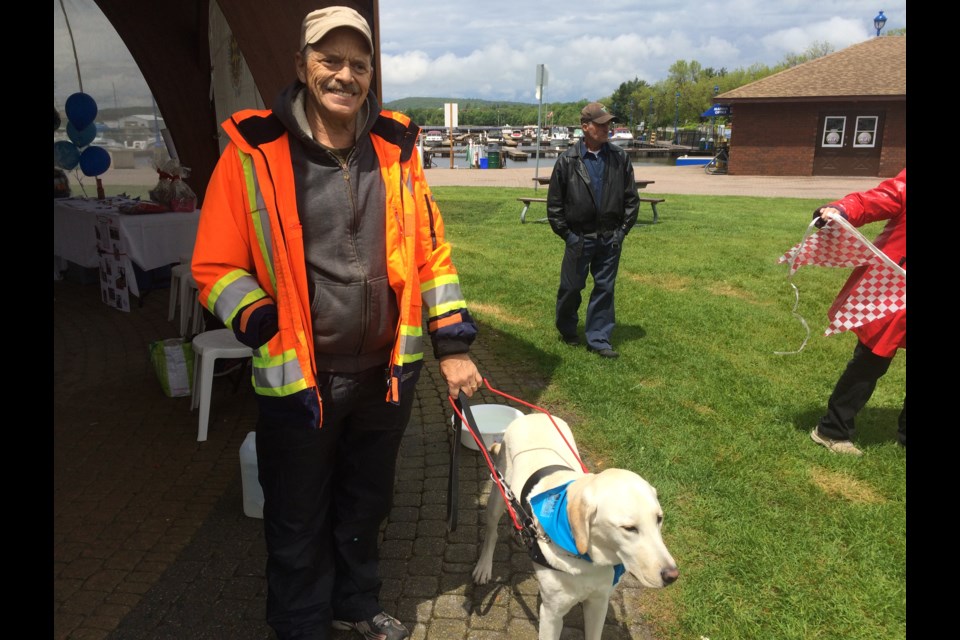It costs $25,000 to raise, train and place a dog guide with its owner.
The training process starts with the dog, usually a black or yellow lab, going to a foster home for the first year of its life. The Lions Foundation of Canada Dog Guides' national training school is in Oakville. The animals receive four to six months of extensive training there, which continues once they're matched with their new handler.
Melanie Pigeau, is a member of the Widdifield Lions Club, and organizer of the Pet Valu Walk for Dog Guides, held Sunday at the North Bay waterfront. Fifty people registered with their dogs for the fundraiser. Pigeau says the work dog guides are capable of doing, is more diverse than most people realize.
"When people think of guide dogs, they think of canine vision dog guides and hearing ear dog guides. It's so much more than that," she said. "We also have dogs trained for autism assistance which helps kids go to school, seizure response dog guides, diabetic alert dog guides, and service dogs."
Once an applicant's request for a dog is approved, the Lions Foundation of Canada provides a guide or service dog at no cost to the owner. Money raised at fundraising events, like the North Bay walk is added to a fund to help absorb the costs.
"The head office looks at what our walk brings in to determine how often they bring in dog guides to our area. When the walk first started off, we were only bringing in $1,000, getting a dog every five to seven years", said Pigeau."In the last three years, we've been getting one every year."
Tom Sincock, has had three-year-old Reggie, a yellow lab, for the past nine months. Sincock lost his vision due to optic neuropathy, simply described as damage to the optic nerve. Sincock mainly sees silhouettes, and light and dark contrasts. Before Reggie, he relied on a cane, which was slow going. Sincock says his specially trained dog keeps him walking at a normal pace. He says Reggie has made a tremendous difference to his life.
"He allows me to get places easier. I don't have to worry about tripping over things, especially during the winter time when there's all sorts of rubble on the sidewalk from the snow plows," explained Sincock. "He guides me around that, he keeps me from running into posts, and things in the stores. Just the independence of being able to walk around, it feels safer."
The training program between dog and owner is four weeks. The owners are brought to and from the training school at no cost.
This is Leanne Giroux's third summer with her golden lab, Albert. Giroux has macular degeneration, a leading cause of vision loss
"It's been amazing. I never thought a dog could actually help as much as he has," said Leanne. "I've been able to go to the grocery store by myself, I go to the doctor's on the bus by myself. I've been able to get out of the house, and I feel a great sense of freedom."
Giroux's husband John says the dog has been a welcome addition. He says his wife is more independent.
"If she had to go somewhere, I would take her. Now she just jumps on the bus," said Giroux. "When he's not working Albert loves to play ball. You couldn't ask for a better animal."
While it may be tempting, owners of dog guides don't want people petting their dog when it has its harness on. That's a sign that it's working. The owners say dogs can get distracted when they're being petted, which can be a safety issue for both dog and owner.
As a follow-up event, a 'Dog Wash for Dog Guides' is scheduled for next Sunday, June 11th, at the parking lot behind Northern Occasions on Lakeshore Drive. Dog owners can get their pet washed between noon and three by making a donation.
